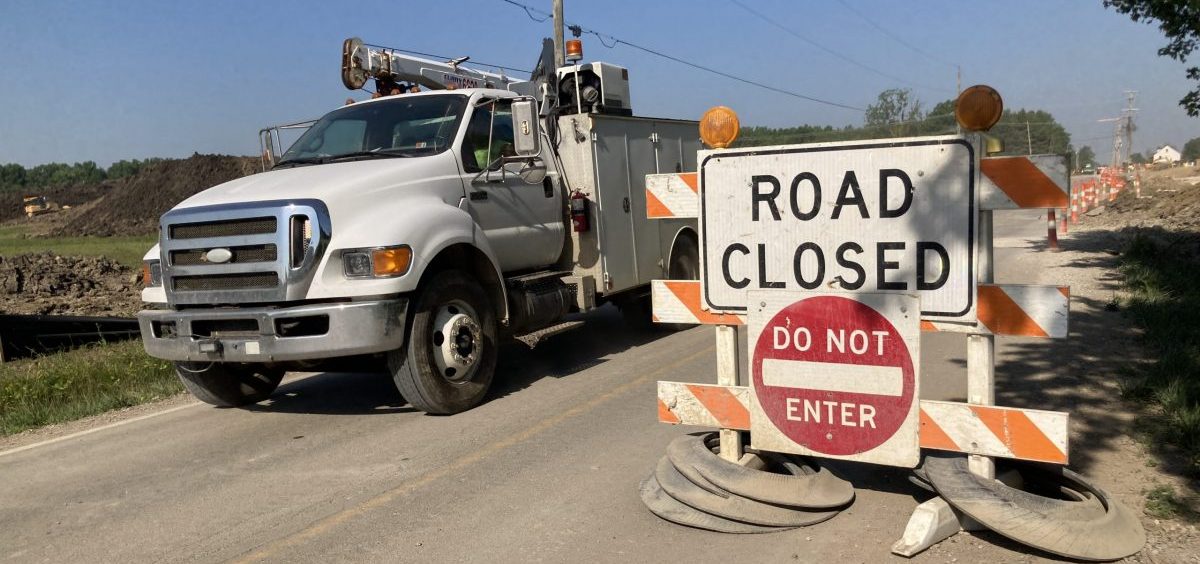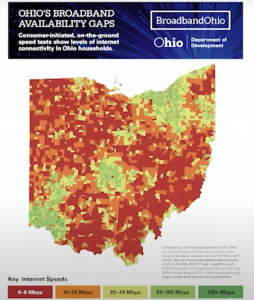News

Local leaders say Intel’s future workforce will need public transportation options
By: Jo Ingles | Statehouse News Bureau
Posted on:
COLUMUBS, Ohio (Statehouse News Bureau) — As President Joe Biden and other leaders prepare to attend a ceremonial groundbreaking for the new Intel project in Licking County — which Ohio officials have called the “Silicon Heartland” — the clock is already ticking for state and city leaders to get ready for what’s being hailed as the biggest economic development project in Ohio history.
Matt Bruning, Ohio Department of Transportation press secretary, said they are expanding what is currently a two-lane road leading to the Intel site.
“The biggest part that ODOT is directly involved in is widening and adding an additional lane to State Route 161 from I-270 out to U.S. 62. That will be done within the footprint of the existing roads. So we’ll add that on the inside so we don’t need to take additional real estate to do that. And the work is supposed to begin in July of 2023, should be wrapped up by November of 2024. So it will take a little over a year to do,” Bruning said.
The first phase of Intel’s project is a $20 billion, 2,000 square acre facility where the company will manufacture semiconductor chips.
Watch: Local leaders urge for expansion of public transit ahead of Intel project
While widening the road is the first thing on the agenda, cars are not the only kind of transportation being considered.
William Murdoch, executive director for the Mid-Ohio Regional Planning Commission, said it’s important to try to get Amtrak to follow through with a proposal to provide a train route between four of Ohio’s major cities.
“MORPC is also the region’s point on securing new passenger rail service to central Ohio. So we’re looking at Columbus to Cleveland. Columbus to Dayton and Cincinnati. Columbus to Pittsburgh. Columbus to Chicago. What that could do is that could open up available employees in those regions to get to and from the site. That’s an option that we think could really be powerful, especially like if you think about Newark in particular or Zanesville, or if you go up Delaware or Mansfield, giving those employees an option not to have to drive an hour or two to get close to the site. Passenger rail could be a big part of that. And this is an exciting time for that because parts of the infrastructure bill gives us money to do that, to implement new service,” Murdoch said.
Central Ohio hasn’t had passenger rail since Amtrak cut service to Columbus in 1979. Josh Lapp, chair of Transit Columbus, wants it back and said Columbus is the largest city in the nation without a rail line of some sort. But if rail materializes this time, it would take the better part of a decade before it is up and operating. He thinks a more immediate solution would be bus rapid transit (BRT).
“It is a bus, but it’s a bus that is grade separated so that it’s not just running on the road, it actually has its own right of way. It operates exactly like you would think a train operating, except it’s running on the street or in its own right of way rather than on tracks. There’s a fairly successful system in Cleveland, the Healthline, that was rated pretty well when it came out. I know there’s some operational issues maybe currently, but we’ve seen huge success with BRT lines around the country and certainly around the world,” Lapp said.
Lapp said biking and walking paths are also important options for those who live closer to the site.

Rick Carfagna, Ohio Chamber of Commerce senior vice president of government affairs, said an estimated 140 companies in Ohio will serve as suppliers to Intel. And he said between 25 to 30 new companies will come here because of Intel. All of them will likely want to attract a diverse pool of employees. Carfagna said transportation will play a key role in achieving diversity.
“There was a Columbus workforce study performed recently that showed the percentages of households without a vehicle by race or ethnicity,” Carfagna said. “So you’re talking about here in the Columbus metro region, there are 6.4% of all households do not have a vehicle to get to work and rely on some form of public transportation or otherwise. Of that, I mean, you’re talking 4.6% are white households, 14.3% are Black households. So, I think as Intel strives to be inclusive in its hiring processes, it’s going to need to take a very strong look at public transportation and how do you get different populations that maybe don’t reside in Licking County out to their operations.”
In addition to roads and public transit, Carfagna also said there will likely need to be upgrades to broadband and cellular service in the area.
The green areas of the above map show the highest internet speeds, with red showing the slowest. As Intel starts construction, Facebook’s parent company Meta is planning to expand its facility in New Albany, two real estate companies are spending $400 million on land to develop a data center campus and industrial park, and this week the Washington, DC-based company DBT-Data announced a $1 billion project near the Intel site.
The bottom line is there are a lot things to do and they need to happen quickly. Intel plans to open the first phase of its operation in 2025.
9(MDU1ODUxOTA3MDE2MDQwNjY2NjEyM2Q3ZA000))

